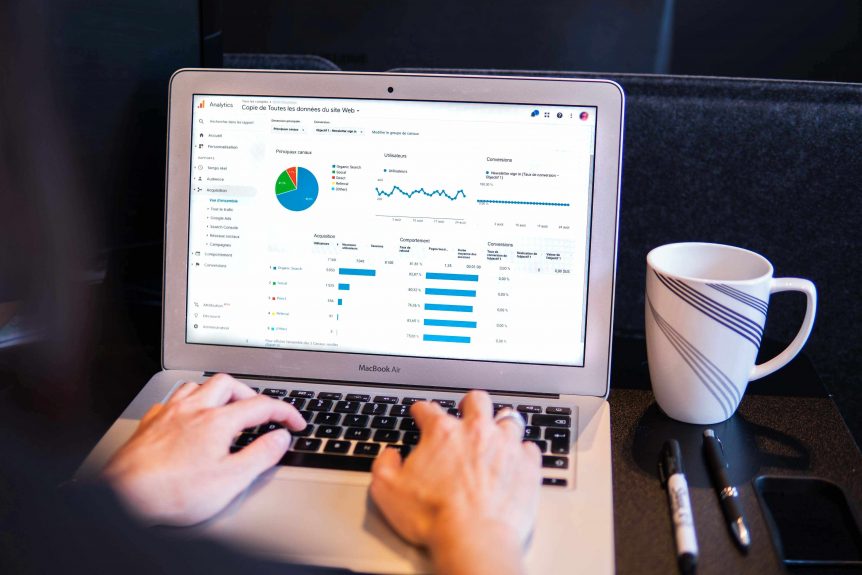In the not-so-distant past, the world of targeted digital advertising was a landscape of manual processes, laborious negotiations, and limited targeting capabilities. Fast forward to today, and we find ourselves in the era of programmatic advertising—a transformative evolution that has reshaped the way brands connect with their audiences online.
1. The Dawn of Digital Advertising:
The journey begins in the early days of digital advertising when banner ads ruled the internet. However, this era was marked by inefficiencies—advertisers lacked precision in targeting, leading to wasted impressions and limited campaign effectiveness.
2. Introduction of Real-Time Bidding (RTB):
The turning point came with the introduction of Real-Time Bidding (RTB) around the mid-2000s. This technology allowed advertisers to bid for ad impressions in real-time auctions, enabling more efficient and targeted ad delivery. RTB laid the groundwork for what would later become the core of programmatic advertising.
3. Programmatic Advertising Emerges:
Programmatic advertising took the stage, bringing automation and efficiency to the digital ad space. But what exactly is programmatic advertising? It’s an automated, data-driven approach to buying and optimizing digital ad space in real-time. This shift from traditional manual ad buying marked the beginning of a new era in advertising.
4. Data-Driven Decision Making:
One of the key pillars of programmatic advertising is its reliance on data. Advertisers began leveraging user data and insights to make informed decisions about when, where, and to whom ads should be delivered. This data-driven approach significantly increased the relevance and effectiveness of targeted digital advertising.
5. Multi-Channel Integration:
Programmatic advertising expanded beyond display banners to include various ad formats and channels. Video, social media, mobile, and even connected TV became integral parts of programmatic campaigns. This multi-channel integration allowed advertisers to create cohesive, cross-channel strategies for maximum impact.
6. Rise of Artificial Intelligence (AI) and Machine Learning (ML):
The evolution of programmatic advertising coincided with advancements in AI and ML. These technologies brought about advanced targeting capabilities, personalized ad content, and real-time optimization. Advertisers could now deliver highly relevant and personalized messages to individual users at scale.
7. Header Bidding:
Header bidding emerged as a game-changer in programmatic advertising. It allowed publishers to offer their ad inventory to multiple ad exchanges simultaneously, increasing competition among advertisers and maximizing revenue for publishers. Header bidding further enhanced the efficiency and fairness of the programmatic ecosystem.
8. Transparency and Brand Safety:
As programmatic advertising continued to evolve, industry players emphasized transparency and brand safety. Advertisers demanded greater visibility into where their ads were being displayed, leading to the development of tools and standards to ensure a brand-safe environment.

9. Why Programmatic Advertising Reigns Supreme:
One of the key reasons behind the triumph of programmatic advertising lies in its unparalleled effectiveness compared to traditional methods of buying digital ads on specific websites.
Why would an advertiser buy targeted digital advertising Programmatically versus buying directly from a Publisher?
a. Precision in Targeting:
Programmatic advertising goes beyond the limitations of buying ad space on individual websites. It leverages intricate algorithms and vast sets of data to precisely target the right audience based on demographics, behavior, and interests. This level of precision ensures that ads are delivered to those most likely to engage with them, maximizing the impact of each campaign.
b. Real-Time Optimization:
Unlike static ad placements on specific websites, programmatic advertising operates in real-time. This means that each ad impression is analyzed instantaneously, allowing for dynamic adjustments to optimize performance. Advertisers can tweak their strategy on the fly, ensuring that the right message is delivered to the right audience at the right time.
c. Efficient Use of Budget:
Programmatic advertising introduces efficiency into ad spending. By automating the buying process and utilizing data to inform decisions, advertisers can allocate budgets more effectively. This not only prevents wasted ad spend on irrelevant audiences but also allows for a more strategic distribution of resources to channels and placements that deliver the best results.
d. Diverse Ad Formats and Channels:
Programmatic advertising doesn’t limit itself to a single website or ad format. It seamlessly integrates across various channels—display, video, social media, mobile, and more. This flexibility enables advertisers to create cohesive, multi-channel campaigns that reach consumers wherever they are, enhancing overall brand visibility and engagement.
e. Scale and Reach:
Buying digital ads on specific websites has inherent limitations in terms of scale and reach. Programmatic advertising, on the other hand, operates on a massive scale, tapping into a vast network of publishers and platforms. This expansive reach ensures that advertisers can connect with audiences across a diverse range of online spaces, maximizing their brand exposure.
f. Data-Driven Insights:
Programmatic advertising provides a treasure trove of data-driven insights. Advertisers gain access to detailed analytics and performance metrics, offering a clear understanding of campaign effectiveness. This data-centric approach empowers advertisers to refine their strategies continuously, learning from real-time results to improve future campaigns.
g. Cost-Effective Pricing Models:
Programmatic advertising often employs cost-effective pricing models, such as Cost Per Mille (CPM) or Cost Per Click (CPC). Advertisers pay for actual impressions or clicks, ensuring their budget is allocated to measurable outcomes. This transparent pricing structure enhances the efficiency and accountability of programmatic campaigns.
Programmatic advertising’s effectiveness stems from its ability to transcend the constraints of buying ads on specific websites. By harnessing automation, data-driven decision-making, and a diverse range of channels, programmatic advertising has become the gold standard for advertisers seeking maximum impact and efficiency in the ever-evolving digital landscape.
Robin Rucinsky, President, Thrive Advertising
10. Future Trends:
Looking ahead, programmatic advertising is poised for further innovation. Emerging technologies like blockchain are being explored to address transparency and ad fraud issues. Additionally, the integration of programmatic into the realms of audio and virtual reality presents new opportunities for advertisers to engage with audiences in immersive ways.
In conclusion, the evolution of programmatic advertising has been a remarkable journey from manual processes to a sophisticated, data-driven ecosystem. As technology continues to advance, the landscape will undoubtedly undergo further transformations, reshaping the future of digital advertising in ways we can only imagine. The programmatic revolution is far from over; it’s an ongoing journey of innovation and adaptation in the ever-evolving targeted digital advertising landscape. If you’d like to speak with an expert in Programmatic Advertising, contact our media buying team today.

